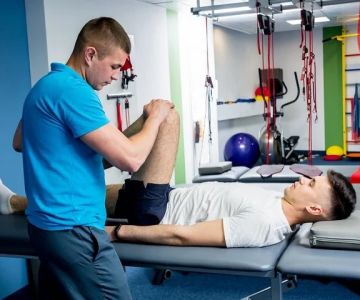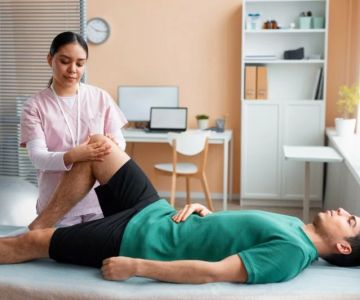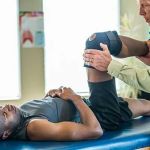
- 1. Understanding Lower Back Pain
- 2. The Role of Chiropractic Care in Treating Lower Back Pain
- 3. Natural Tips for Managing Lower Back Pain
- 4. When to Visit a Chiropractor for Lower Back Pain
1. Understanding Lower Back Pain
Lower back pain is one of the most common complaints among adults, affecting millions every year. It can arise from various causes, including poor posture, muscle strains, injuries, and even stress. For many, it becomes a chronic issue, making it difficult to perform everyday tasks. Understanding the root causes of your back pain is essential for determining the best course of action to alleviate it.
2. The Role of Chiropractic Care in Treating Lower Back Pain
Chiropractic care is a popular and effective treatment for managing lower back pain, particularly for those who wish to avoid medications or invasive procedures. Chiropractors use spinal adjustments to correct misalignments in the spine, which can be a common cause of back pain. These adjustments help to restore proper alignment, reduce inflammation, and improve mobility.
In addition to spinal adjustments, chiropractors may also incorporate other therapies such as massage, stretching exercises, and lifestyle modifications to provide long-term relief from lower back pain. Chiropractic care aims to treat the root cause of the pain, rather than just masking the symptoms.
3. Natural Tips for Managing Lower Back Pain
While chiropractic care is an excellent option for managing lower back pain, there are also several natural ways to alleviate discomfort and improve your quality of life. Here are a few expert-recommended tips to incorporate into your routine:
3.1. Maintain Proper Posture
Good posture is essential for reducing strain on your lower back. When sitting, ensure that your spine is properly aligned, with your shoulders back and your feet flat on the floor. Avoid slouching, which can cause additional pressure on the spine and muscles. When standing, make sure your weight is evenly distributed between both feet.
3.2. Incorporate Regular Stretching
Regular stretching helps to maintain flexibility and relieve tension in the muscles surrounding the lower back. Gentle stretches targeting the hamstrings, hip flexors, and lower back muscles can prevent stiffness and improve mobility. Consider adding yoga or Pilates to your routine to promote overall spinal health.
3.3. Stay Active with Low-Impact Exercise
Low-impact exercises like walking, swimming, or cycling can help strengthen the muscles supporting your lower back without putting excessive strain on it. Regular physical activity improves blood flow, reduces inflammation, and helps keep the spine and muscles strong and flexible.
3.4. Use Heat or Cold Therapy
Heat and cold therapy are simple, effective ways to reduce lower back pain. Apply an ice pack for the first 48 hours after experiencing pain or injury to reduce swelling and inflammation. Afterward, heat therapy, such as a warm compress or heating pad, can help relax tight muscles and improve circulation.
3.5. Focus on Strengthening Your Core
A strong core is essential for supporting the spine and alleviating lower back pain. Exercises that target the core muscles—such as planks, bridges, and abdominal exercises—can help improve stability and reduce the risk of back pain. Work with a fitness professional to ensure proper form when performing these exercises.
4. When to Visit a Chiropractor for Lower Back Pain
While many people can manage mild lower back pain with self-care and home remedies, there are times when it's essential to seek professional help. If you experience any of the following symptoms, it may be time to visit a chiropractor:
- Severe or persistent pain that doesn't improve with rest or self-care
- Radiating pain that travels down your legs or into your feet
- Difficulty moving or performing everyday tasks
- Sharp, shooting pain or muscle spasms
A chiropractor can assess your condition, perform a thorough evaluation, and recommend a personalized treatment plan tailored to your needs. In many cases, chiropractic adjustments can provide significant relief and help you return to normal activities without relying on medications.
In conclusion, chiropractic care is a natural and effective way to manage lower back pain, especially when combined with healthy lifestyle habits such as proper posture, regular exercise, and stretching. For more information on chiropractic services and tips for managing back pain, visit ChiroScope to find the right products and services to support your spinal health.







 Dr. Noel F. Plasker, DC5.0 (3 reviews)
Dr. Noel F. Plasker, DC5.0 (3 reviews) Chiro One Chiropractic & Wellness Center of Andersonville4.0 (90 reviews)
Chiro One Chiropractic & Wellness Center of Andersonville4.0 (90 reviews) MaxLiving Chiropractic Castle Hills5.0 (37 reviews)
MaxLiving Chiropractic Castle Hills5.0 (37 reviews) Dr. Terry M. Hough0.0 (0 reviews)
Dr. Terry M. Hough0.0 (0 reviews) James A. Marshall, DC5.0 (4 reviews)
James A. Marshall, DC5.0 (4 reviews) Movement Lab NY5.0 (5 reviews)
Movement Lab NY5.0 (5 reviews) Everything You Need to Know About Pregnancy and Chiropractic from a Chiropractic Perspective
Everything You Need to Know About Pregnancy and Chiropractic from a Chiropractic Perspective Best Chiropractic Treatments for Frozen Shoulder Relief According to Experts
Best Chiropractic Treatments for Frozen Shoulder Relief According to Experts The Benefits of Regular Chiropractic Visits for Stress Relief and Mental Clarity
The Benefits of Regular Chiropractic Visits for Stress Relief and Mental Clarity Chiropractic for Managing Stress-Induced Health Issues
Chiropractic for Managing Stress-Induced Health Issues Can Chiropractic Care Solve Your Chiropractic for Athletes Problem?
Can Chiropractic Care Solve Your Chiropractic for Athletes Problem? Everything You Need to Know About Chiropractic Insurance Coverage from a Chiropractic Perspective
Everything You Need to Know About Chiropractic Insurance Coverage from a Chiropractic Perspective